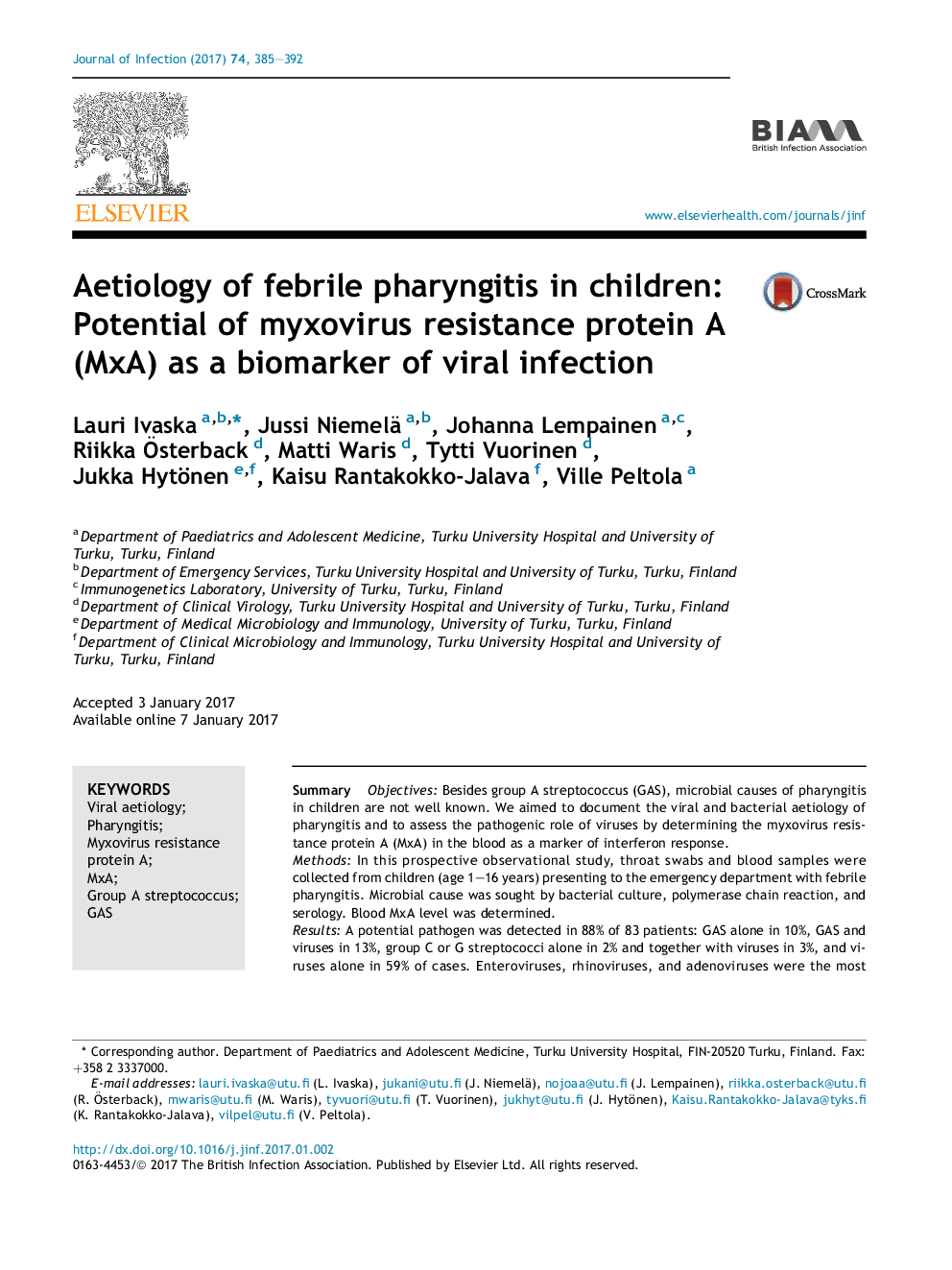| Article ID | Journal | Published Year | Pages | File Type |
|---|---|---|---|---|
| 5668741 | Journal of Infection | 2017 | 8 Pages |
â¢We evaluated the microbiological aetiology of febrile pharyngitis in 83 children.â¢A potential pathogen could be detected in 88% and virus in 76% of patients.â¢Blood myxovirus resistance protein A (MxA) levels were elevated in most of the patients with virus finding.â¢MxA is a promising biomarker of virus infection.
SummaryObjectivesBesides group A streptococcus (GAS), microbial causes of pharyngitis in children are not well known. We aimed to document the viral and bacterial aetiology of pharyngitis and to assess the pathogenic role of viruses by determining the myxovirus resistance protein A (MxA) in the blood as a marker of interferon response.MethodsIn this prospective observational study, throat swabs and blood samples were collected from children (age 1-16 years) presenting to the emergency department with febrile pharyngitis. Microbial cause was sought by bacterial culture, polymerase chain reaction, and serology. Blood MxA level was determined.ResultsA potential pathogen was detected in 88% of 83 patients: GAS alone in 10%, GAS and viruses in 13%, group C or G streptococci alone in 2% and together with viruses in 3%, and viruses alone in 59% of cases. Enteroviruses, rhinoviruses, and adenoviruses were the most frequently detected viruses. Blood MxA levels were higher in children with viral (880 [245-1250] μg/L; median [IQR]) or concomitant GAS-viral (340 [150-710] μg/L) than in those with sole GAS (105 [80-160] μg/L) infections.ConclusionsDetection of respiratory viruses simultaneously with elevated blood MxA levels supports the causative role of viruses in the majority of children with pharyngitis.
